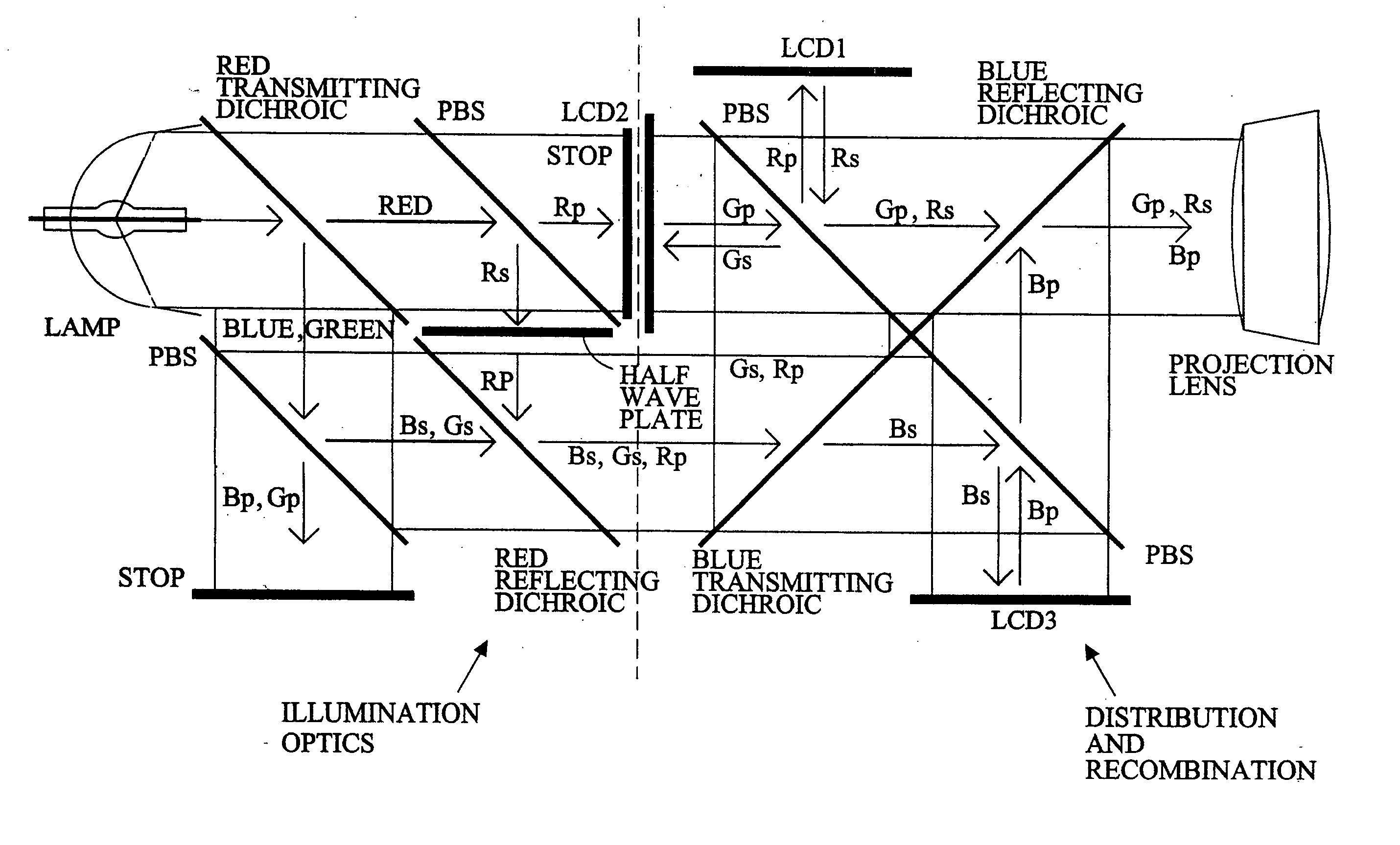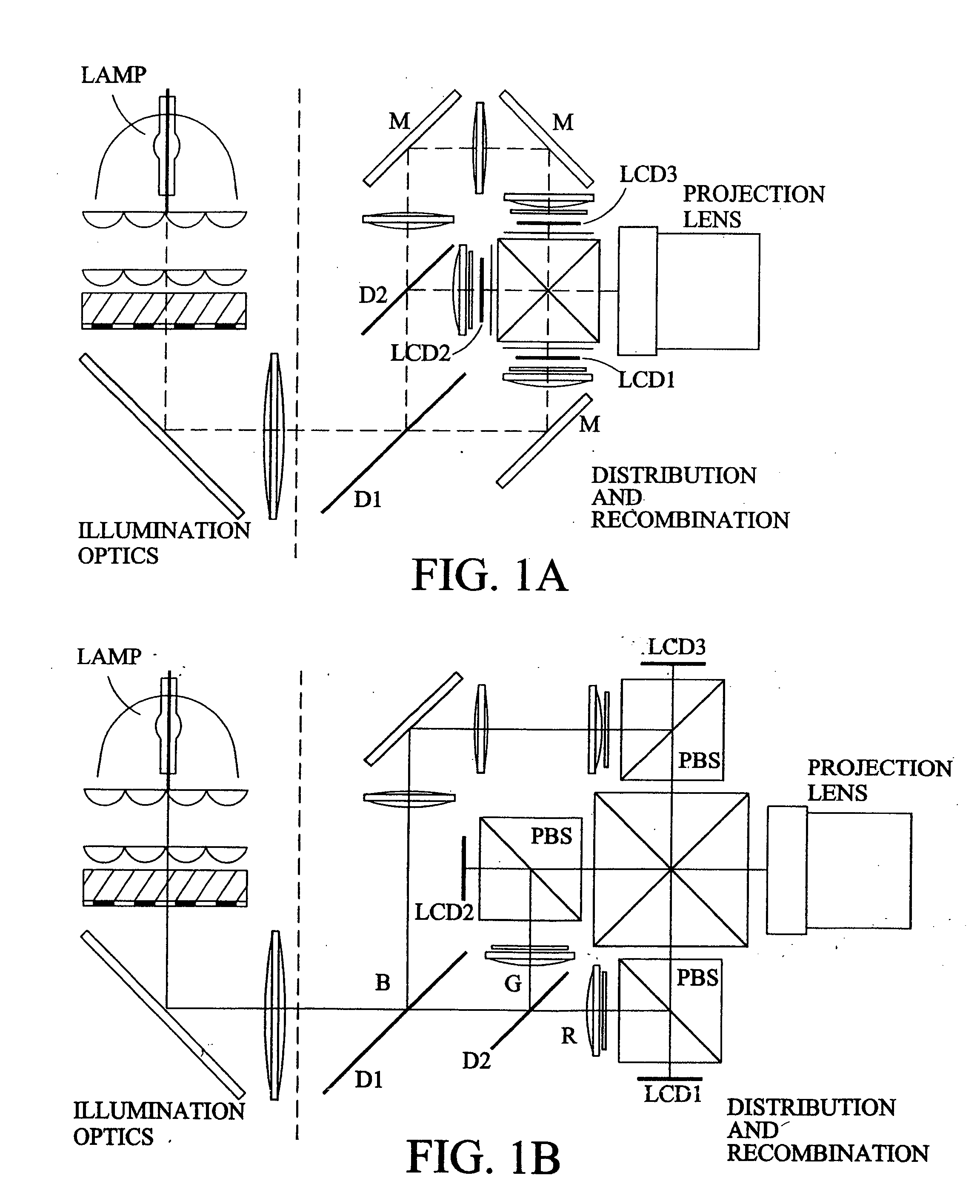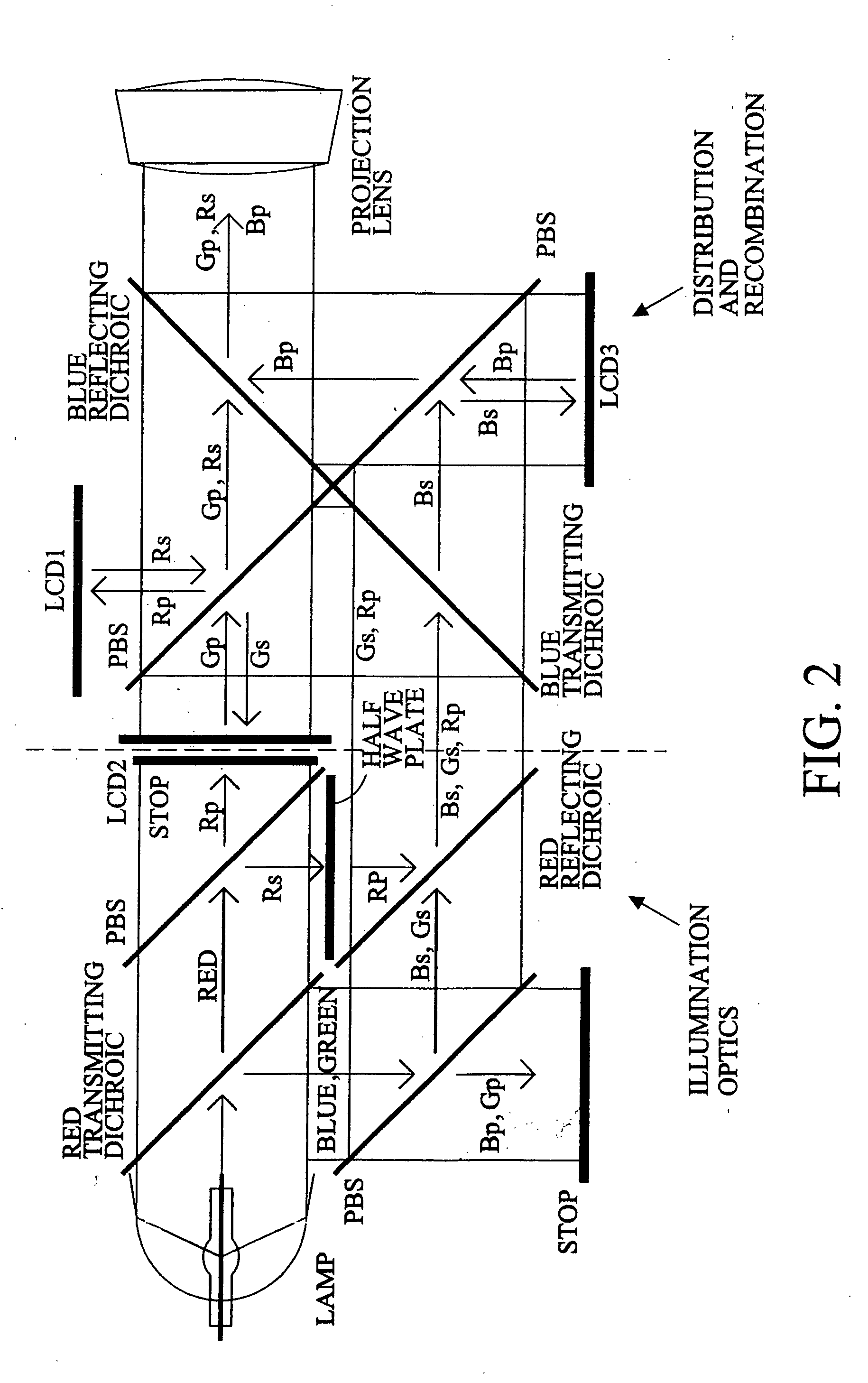Projection display systems for light valves
a technology of projection display and light valve, which is applied in the direction of picture reproducers using projection devices, instruments, non-linear optics, etc., can solve the problems of large system complexity, complicated prefiltering system, and large complexity of projection system for reflective liquid crystal display (lcd), so as to reduce the overall projection display system size and complexity, reduce the size of distribution and recombination system, and reduce the effect of complexity
- Summary
- Abstract
- Description
- Claims
- Application Information
AI Technical Summary
Benefits of technology
Problems solved by technology
Method used
Image
Examples
Embodiment Construction
[0026] Referring now to the figures, wherein like numerals refer to like elements, FIG. 3 shows an exemplary projection display 10 having an illumination portion 11 and distribution and recombination portion 22. Distribution and recombination portion 22 includes three reflective liquid crystal display (LCD) panels 14, 16, and 18, also referred to as liquid crystal light valves.
[0027] Illumination portion 11 includes a light source 12 for producing white light, which may be separated into different color components of different bandwidths, such as a red color component, blue color component, and green color component. The white light from light source 12 passes through a polarization converter shown generally at 20. Polarization converter 20 may take the form of any conventional polarization converter, so that the randomly polarized light from light source 12 is converted into a single polarization state. In the embodiment shown in FIG. 3, the polarization converter 20 converts the ...
PUM
 Login to View More
Login to View More Abstract
Description
Claims
Application Information
 Login to View More
Login to View More - R&D
- Intellectual Property
- Life Sciences
- Materials
- Tech Scout
- Unparalleled Data Quality
- Higher Quality Content
- 60% Fewer Hallucinations
Browse by: Latest US Patents, China's latest patents, Technical Efficacy Thesaurus, Application Domain, Technology Topic, Popular Technical Reports.
© 2025 PatSnap. All rights reserved.Legal|Privacy policy|Modern Slavery Act Transparency Statement|Sitemap|About US| Contact US: help@patsnap.com



